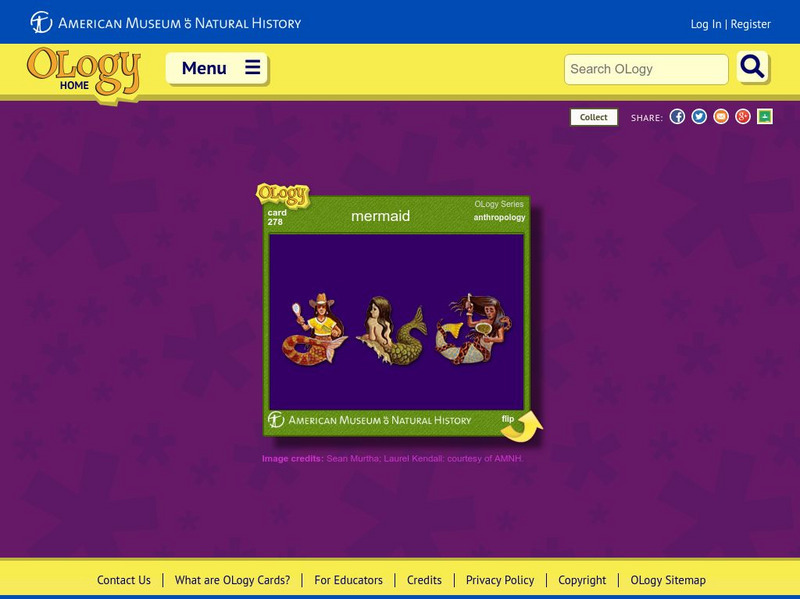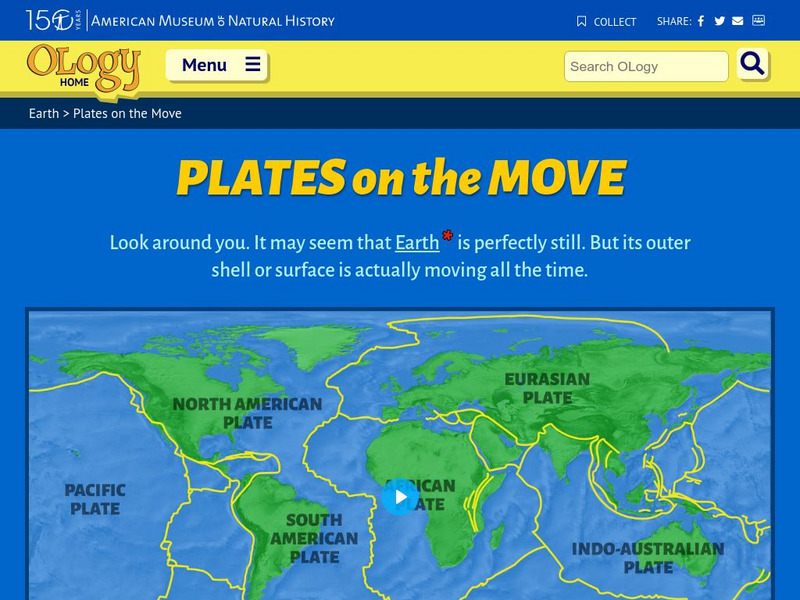Smithsonian Institution
National Museum of Natural History: Hall of Mammals: Hippopotamus
Brief overview of the hippopotamus and accompanying photos demonstrate the physical adaptations that allow this animal to survive in its habitat.
Smithsonian Institution
National Museum of Natural History: Hall of Mammals: Scimitar Horned Oryx
Brief overview of the Scimitar-horned oryx and accompanying photos demonstrate the physical adaptations that allow this animal to survive the desert heat.
Smithsonian Institution
National Museum of Natural History: Hall of Mammals: Crabeater Seal
Brief overview of the crabeater seal and accompanying photos demonstrate the physical adaptations that allow this animal to eat and survive.
Smithsonian Institution
National Museum of Natural History: Hall of Mammals: Przewalski's Horse
A brief overview of the Przewalski's horse and accompanying photos demonstrate why this animal is becoming extinct.
Smithsonian Institution
National Museum of Natural History: Hall of Mammals: Giant Panda
Brief illustrated overview of the giant panda and an accompanying video demonstrate the physical adaptations that allow this animal to eat and why it has become an endangered species.
Smithsonian Institution
National Museum of Natural History: Hall of Mammals: Red Panda
Brief overview of the red panda and accompanying photos demonstrate the physical adaptations that allow this animal to eat and survive in its habitat.
Smithsonian Institution
National Museum of Natural History: Hall of Mammals: Sumatran Tiger
Brief overview of the Sumatran tiger and accompanying pictures demonstrate why its size and physical characteristics allow this animal to be a dangerous threat to its prey.
Smithsonian Institution
National Museum of Natural History: Hall of Mammals: Black Bear
Brief overview of the black bear and accompanying photos demonstrate the physical adaptations that allow this animal to eat and survive in their habitat.
Smithsonian Institution
National Museum of Natural History: Hall of Mammals: Beaver
A brief overview of the beaver and accompanying photos demonstrate the physical adaptations that allow this animal to eat and live in its habitat.
Smithsonian Institution
National Museum of Natural History: Hall of Mammals: Bison
Brief overview of the bison and accompanying photos demonstrate the physical adaptations that allow this animal to survive in its habitat.
Smithsonian Institution
National Museum of Natural History: Hall of Mammals: White Tailed Deer
Brief overview of the white-tailed deer and accompanying photos demonstrate the physical adaptations that allow this animal to mate and feed their babies.
Smithsonian Institution
National Museum of Natural History: Hall of Mammals: Canadian Lynx
A brief overview of the Canadian lynx and accompanying photos demonstrate the physical adaptations that allow this animal survive in its habitat.
Smithsonian Institution
National Museum of Natural History: Hall of Mammals: Vampire Bat
Brief overview of the vampire bat and an accompanying photo demonstrate the physical adaptations that allow this animal to eat to survive.
American Museum of Natural History
American Museum of Natural History: O Logy: Mermaid
The myth of the mermaid has been found in stories of many cultures. Take the quiz and learn more about this mythical creature. Flashcard format.
American Museum of Natural History
American Museum of Natural History: Meet the Universe's Main Attraction Gravity
Illustrated and animated series of short articles answers the questions, what is gravity? and what does it do?
American Museum of Natural History
American Museum of Natural History: O Logy: The Tree of Life: True Bacteria
Visit the tree of life and discover characteristics, habitats, and examples of the world's true bacteria.
Smithsonian Institution
National Museum of Natural History: Hall of Mammals: Pronghorn
Brief overview of the pronghorn and accompanying photos demonstrate the physical adaptations that allow this animal to be one of the fastest mammals.
Other
New Mexico Museum of Natural History and Science: Coelophysis
The Coelophysis is New Mexico's official state fossil. It lived in the late Triassic Period and has only been found in New Mexico. Popular questions about this dinosaur are answered here. In addition, there are numerous documents about...
American Museum of Natural History
American Museum of Natural History: O Logy: Plates on the Move
Find an interrelated set of tools--maps, animations, diagrams, photographs, and text--to help you understand tectonic plates and how they move.
Smithsonian Institution
National Museum of Natural History: Paleobiology: The Cambrian Period
Journey into the past while reading this comprehensive overview of the Cambrian Period that covers topics such as the Cambrian Explosion, Burgess Shale fauna, trilobites, fossil evidence, and climate and plate tectonics.
Smithsonian Institution
National Museum of Natural History: Paleobiology: The Ordovician Period
Journey into the past while reading this comprehensive overview of the Ordovician Period that covers topics such as reef ecosystems, Paleozoic Fauna, fossil evidence, and climate and plate tectonics.
Smithsonian Institution
National Museum of Natural History: Paleobiology: The Archaean Eon
Journey into the past while reading this comprehensive overview of the Archaean Eon that covers topics such as early continents and oceans, first life on Earth, Earth's atmosphere, fossil evidence, and plate tectonics.
Smithsonian Institution
National Museum of Natural History: Paleobiology: The Mississippian Period
Journey into the past while reading this comprehensive overview of the Mississippian Period that covers topics such as life in the seas, tetrapods and other life on land, fossil evidence, and climate and tectonics.
Smithsonian Institution
National Museum of Natural History: Paleobiology: The Proterozoic Eon
Journey into the past while reading this comprehensive overview of the Proterozoic Eon that covers topics such as the Prokaryotic life, Eukaryotes, glaciation, fauna evidence, and multicellular life forms.




